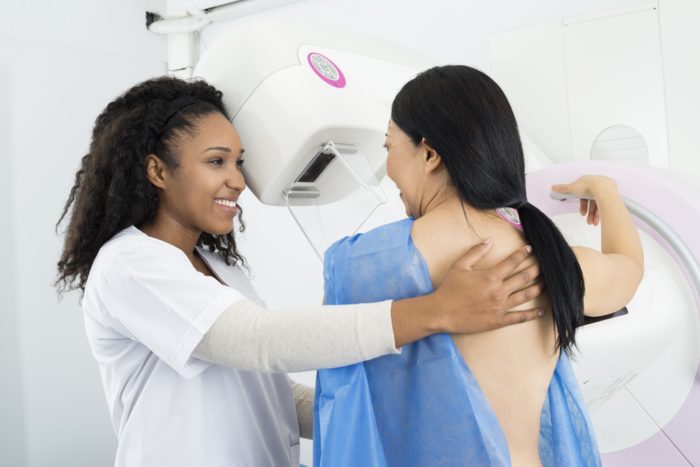
In many cases ladies, the sooner a health problem is discovered, the more likely it is for you to have a better outcome or prognosis. This is certainly true of breast cancer. The earlier breast cancer is detected, the better the treatment and chance of a good outcome. The longer it has not been detected, the more chance it has to advance to the point where it can’t be treated effectively.
Let’s talk about some ways to detect breast cancer early.
Self-examination
Being breast cancer aware and checking your breasts once a month will help you establish a baseline of what is typical. Your breasts change throughout your monthly cycle, so check them a week before or week after your period. Report anything unusual to your medical provider.
Clinical breast examination
Your medical provider will have extensive experience in examining women for breast cancer. This exam should be part of your regular checkup. It might also be a part of a follow up visit with your medical provider to confirm what you think you might have found during a self-exam.
Mammography
Mammography uses small amounts of radiation to scan the breasts to try to detect any cell abnormalities, cysts or tumors. It can be part of a regular well-woman routine, along with other diagnostic tests. Or it might be recommended in order to follow up on something that might have been found during a manual breast exam. The mammogram is still the gold standard for breast cancer detection.
Ultrasonography
Ultrasonography uses sound waves to bounce off the breast tissue. Any dense item such as a tumor will appear differently from the normal breast tissue. This usually is done alongside a mammogram when a lump is detected. Some women who don’t want a mammogram may request an ultrasound.
[bctt tweet=”There can be life after breast cancer. The prerequisite is early detection. Ann Jillian” username=”httpstwittercommichelebroad”]
Thermography
Thermography creates a heat profile of the breast. Tumors appear in different colors from the other parts of the breast. Thermography doesn’t involve any radiation to the breast. Some women prefer this. A mammogram is then ordered if something is found on a thermography.
MRI of the breast
MRI, that is, magnetic resonance imaging, uses a magnetic field to detect changes in the body such as tumors. Women who have very dense breast and a family history of breast cancer are usually candidates for this test.
Biopsy
Suspicious breast tissue will have a biopsy done to examine it under a microscope, this is usually done by drawing out some of the breast tissue using a fine needle. This is called a fine needle aspiration. Depending on the results of the biopsy, other tests and further examinations will follow.
Genetic Blood tests
Women who meet a certain family history criteria may be eligible for The BRACA 1 and 2 blood test. If you have family history of breast cancer you will need to talk to your medical provider to see if you meet that criteria.
Lumpectomy or mastectomy
The breast surgeon may remove a lump if it is found. Not all lumps are cancerous and need to be removed. If it does have to be removed this is called a lumpectomy. If the tumor is too large the entire breast may have to be removed. This is called a mastectomy. The tumor will then be examined to determine the stage of the cancer.
In addition to the tumor, the breast surgeon might remove one or more lymph nodes from the chest and/or the underarm of the affected side to determine if the cancer has spread to these important parts of the immune system.
Ladies, most breast cancers are not painful, therefore if you have not been paying attention to your breast health, now is the time to start.
https://www.cancer.org/cancer/breast-cancer/screening-tests-and-early-detection.html
The Importance Of Early Detection With Breast Cancer
October 15, 2018
TELL ME MORE!
wanting to be their own self-care advocate
JOIN WOMEN JUST LIKE YOU AND FROM ALL
DIFFERENT BACKGROUNDS, SHARING ONE THING IN COMMON:
JOIN WOMEN JUST LIKE YOU AND FROM ALL DIFFERENT BACKGROUNDS, SHARING ONE THING IN COMMON:
JOIN OUR MONTHLY
MEMBERSHIP
Craving more connection?
CLOSE